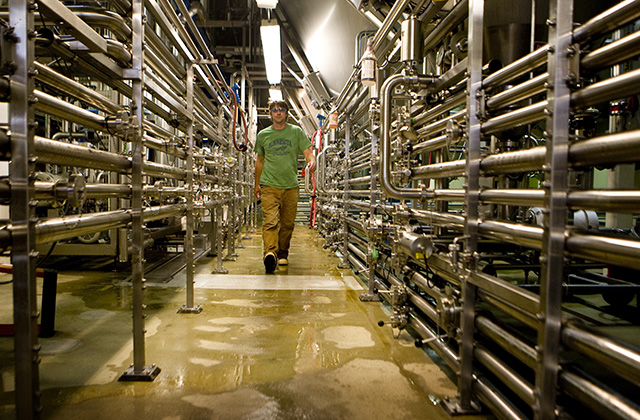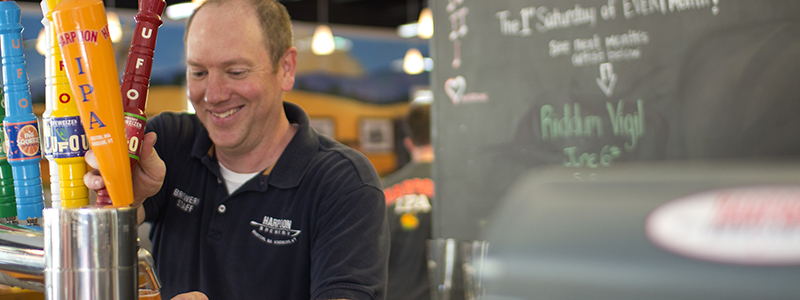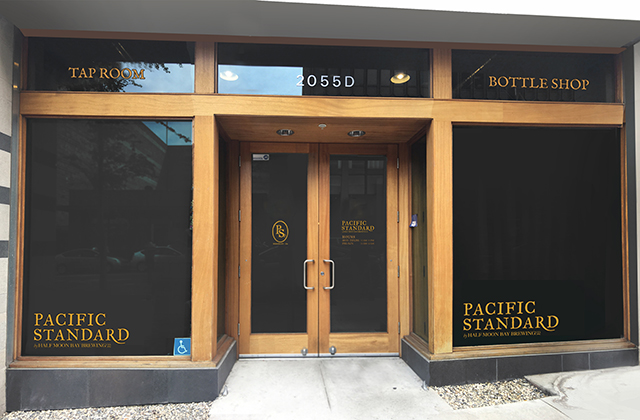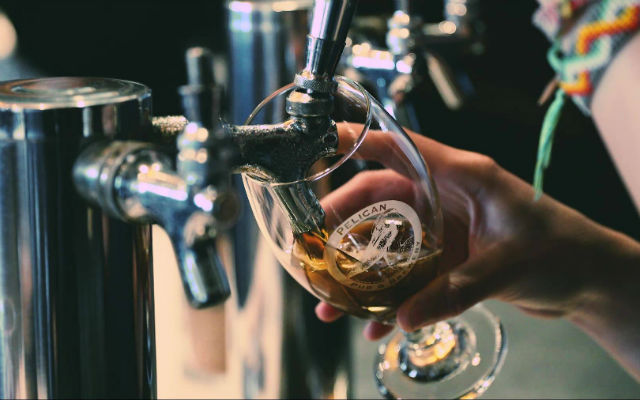
Although the percentage of a craft brewery becoming an Employee Stock Ownership Plan (ESOP) is greater than most any other industries, it’s still a rarity. The set up basically means a brewery will give some control of ownership (usually a minority percentage) with promises of a payout at the end of employee’s career which is built on tenure of service.
“I think the culture of the ESOP, brewery or not, aligns with brewing culture,” explained Odell Brewing CFO Chris Banks. “Everyone wants to pitch in and they have a common goal and a fun element. I don’t know why, but they match very well.”
Odell made its ESOP transition in July, 2015 with 19 percent of the brewery’s ownership going to the ESOP while management owns a total of 51 percent. The other 30 percent is owned by the Odell family.
“There are concerns, you can sell to someone with deep pockets and have heavy growth,” Banks said, “but we have always been about moderate, balanced growth. If we keep doing what we are doing and I think our customers and distributors will appreciate that and we will all be successful.”
Many larger breweries, like Odell, have gone the ESOP route over the last 5-10 years, following in New Belgium’s footsteps. New Belgium since the start in 1991 worked on a loose model of an ESOP and officially became one once the laws were changed in 2000, explained longtime New Belgium media relations director Bryan Simpson.
“There are a great many upsides, and it’s hard to put a quantitative on it,” he said. “But the idea of people feeling ownership of the place and wanting to be all in, it comes down to a flat hierarchy here so you are working as hard for the person next to you as you are for yourself. That creates a great camaraderie, through the thick and the thin.”
The latest craft brewery ESOP is Western Pennsylvania’s Voodoo Brewery, which switched in early 2016 with just 17 employees — quite possibly the smallest ESOP in the country. Voodoo is just the seventh craft brewer to go to an ESOP according to the National Center for Employee Ownership. A few others have made contact with the NCEO, but have not gone farther than speculative research.
Although it can be a burden on time and finances to get started, some officials that have taken the plunge find it puzzling that more have not followed the ESOP route.
“Most things worth doing take time and effort,” said Harpoon co-founder Dan Kenary about the switch to an ESOP in July, 2014. “My partner [Rich Doyle] wanted to sell and I had to sit through plenty of meetings with investment bankers, and they are very persuasive and they whisper exactly what you want to hear and try to convince you you are an idiot for not taking the money and running.”
The move at Harpoon gave employees of the brewery 48 percent of the company.
“We’ve always, thankfully, had great people and a really engaged culture,” said Kenary. “This wasn’t a stretch for us to develop an even more engaged ownership culture. The reaction was incredibly positive and since that we have been deepening and broadening our culture as opposed to doing something completely new.”
But how does an ESOP even come to life?
Lots of time, effort and learning, said Banks. Skimping isn’t much of an option so he advised to find people that have done it, be it one of the breweries that have gone ahead with it or other local businesses that have switched to an ESOP.

ESOPs are a qualified plan, like a 401k, but instead of being invested in mutual funds, it’s invested in the brewery itself. It’s not diversified. It is subject to many state and federal laws and overseen by the IRS. It’s a tax-free entity, so whatever the ESOP owns, it doesn’t have to pay taxes on it. It’s differed until the co-workers take out their money when they retire.
For Odell, finding a good trustee to run the ESOP was crucial. A trustee has to go and hire an evaluation expert. Those experts will know how much the ESOP will pay for whatever portion of the company is being sold.
“It’s a due diligence process,” Banks explained. “They poke and prod and test your assumptions and projections. They beat you up a bit and they figure out what they are willing to pay.”
On the other side, the owners are doing the same thing, figuring out how much they can sell to the ESOP. Their trustee is not allowed to pay one dollar more than the fair market value of that stock. The owners do all this work and offer it to the ESOP and then they either accept it or negotiate. Heavily regulated legal documents set up the rules for the ESOP. It can take months to hammer out the details.
Once that is done, a repurchase study is made to project when people will leave and what the future value of the company will be so a brewery can understand what its liability is in the future and how much in terms of funds it will need to be liable for.
“It’s intense. It’s complicated and expensive. It’s not for everybody,” Kenary said. “You have to be a certain size for it to make sense because of the cost involved to set it up and administrating it. It’s a federal structure and heavily regulated. If you aren’t set up to file all the forms and do all the stuff you have to do, then you shouldn’t do it.”
“It’s a complex area of law and accounting,” Banks said. “I think a lot of people think it’s turning a switch and a transaction, but it took months to draw up the paperwork and get it right. It’s hard to unwind an ESOP. Do it right the first time.”
Getting great council and accountants are important.
“We sent five people to multiple conferences and interviewed multiple consultants and lawyers to know what we were getting into,” Banks said. “It’s a time suck. It’s something where you are working on your company but you are not selling beer. And it’s expensive.”
Although a switch to an ESOP is something possibly used as a way to not sell to an outside channel, Simpson said that although it would be hard and time consuming, an ESOP could be bought out.
“If someone came in with a crazy, wild offer our trustee would have to consider that,” he said about New Belgium, which its ESOP owns 100 percent of the company. “Would it benefit the ESOP? Then it would go to the board of directors for review and it could come down to a thumbs up or down vote.
“One thing we have done is we are a certified B-Corp. So we aren’t just beholden to our financial bottom line but also we consider the earth and stakeholders as well. So if we had a deal that was crazy good money, but not a cultural fit or counter to our mission, we could have right to refusal.”
ESOPs are tied to brewery culture, and the “everyone gets the job done mentality” seems to fit perfectly with many of the 4000-plus breweries in the country.
“We’ve always worked in an open atmosphere, we shared revenue and profits even before this. The books are open,” Banks explained about how Odell runs its business. “We have always kind of felt we have had that ownership culture, now we are just backing it up with equity options for the co-workers.”





3 Trackbacks / Pingbacks